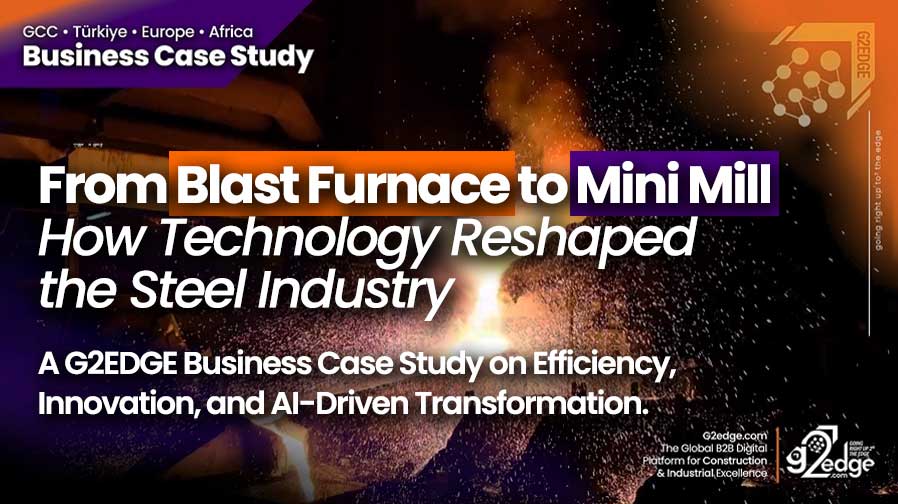
For more than a century, the blast furnace stood as the symbol of industrial power — massive towers
of iron ore, coke, and limestone burning at over 1,500 °C. It forged the bridges, skyscrapers, and railways that built the modern world.
Power met inefficiency — high energy, high cost, and high emissions.
The Mini-Mill Revolution
In the 1980s, a quiet revolution began. Mini-mills replaced massive blast furnaces with compact
Electric Arc Furnaces (EAFs) that recycled scrap steel instead of smelting raw ore.
The results were dramatic — energy consumption dropped by over 60 %, production cycles shrank from days to hours,
and plants could be built closer to customers. Logistics costs and carbon footprints fell at the same time.
- ?? Scrap ? Steel in Hours
- ?? Electric Arc Furnace (EAF) • Low Energy • Fast • Efficient
- ?? Foundation of Sustainable Steelmaking
Technology Takes the Helm
The next leap came with automation and digital process control.
Sensors, analytics, and predictive maintenance software began optimizing furnace temperature, chemistry, and yield.
Every ton of steel became smarter, cleaner, and cheaper to produce.
Real-time data monitoring cut downtime, improved consistency, and turned steelmaking from a manual craft into a
precision science.
AI and Machine Learning — Smart Steelmaking in Action
Today’s most advanced steel plants operate as data ecosystems.
Each stage — from furnace to rolling mill — generates millions of data points every second.
AI and machine learning models analyze this data in real time to predict furnace behavior, balance
chemical reactions, and fine-tune feed rates for the perfect melt.
- ?? Neural networks guide casting speed and optimize yield.
- ?? Computer vision inspects surface quality in milliseconds.
- ? Predictive maintenance reduces unplanned downtime by up to 30 %.
- ?? Energy optimization engines align production with renewable power.
AI doesn’t just assist production — it learns, adapts, and improves with every heat poured.
Sustainability and Circular Manufacturing
With renewable power and smart recycling, mini-mills have become the backbone of
the circular economy. Steel is now melted, reused, and re-imagined with minimal waste.
Hydrogen-based furnaces and carbon-capture systems are moving from pilot to production,
transforming one of the world’s most carbon-intensive industries into a driver of decarbonization.
- ?? Green Steel Movement • Hydrogen Furnace • Carbon Capture
- ?? From Linear to Circular Manufacturing Models
The Present and the Future
Steelmaking today is faster, cleaner, and smarter than ever before.
Electric arc furnaces dominate new capacity, while AI and automation redefine operational excellence.
Global producers are racing toward net-zero steelmaking by 2050.
From fire to data — technology has reshaped the world’s most essential material.
The transformation of steel is a story of industrial reinvention — proof that with the right technology,
even the oldest industries can lead a sustainable future.